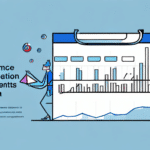Comparing Critical E-Commerce Operations Metrics: Customer Churn Rate vs. Customer Retention Rate
In the dynamic world of e-commerce, two metrics stand out as essential for business survival and growth: customer churn rate and customer retention rate. Monitoring these metrics provides deep insights into the effectiveness of your operations and marketing strategies. This article delves into the distinctions between customer churn and retention, the importance of measuring these metrics, and effective strategies to enhance your customer retention rate.
Understanding the Difference Between Customer Churn and Customer Retention in E-Commerce
Customer churn rate represents the percentage of customers who cease purchasing from your e-commerce store within a specific period, such as a month or quarter. Conversely, customer retention rate signifies the percentage of customers who continue to make purchases during the same timeframe.
For instance, if your store had 1,000 customers in the last quarter and 200 did not return in the current quarter, your customer churn rate would be 20% (200/1000). Similarly, with 800 returning customers, your retention rate stands at 80% (800/1000).
These metrics are pivotal indicators of your business's health. A high churn rate may signal customer dissatisfaction, while a high retention rate suggests that your business meets or exceeds customer expectations. Regularly tracking these metrics allows you to pinpoint areas for improvement and develop strategies to boost customer loyalty and satisfaction.
Why Measuring Customer Churn and Retention Is Essential for Your E-Commerce Business
Tracking customer churn and retention rates is fundamental for the growth and profitability of your e-commerce business. High churn can significantly diminish revenue and profitability, whereas enhanced retention can bolster your bottom line and cultivate a loyal customer base.
Monitoring these metrics helps identify customer behavior trends, such as purchasing frequency, preferred products, and average order value. This information is invaluable for optimizing your operations, refining marketing strategies, and tailoring product offerings.
Moreover, analyzing customer churn and retention can uncover weaknesses in your customer service and overall customer experience. By examining feedback from churned customers, you can identify common pain points and areas where your business may be failing to meet expectations. Addressing these issues can lead to improved business processes, enhanced customer service, and ultimately higher retention rates.
The Impact of High Customer Churn Rate on Your E-Commerce Operations
A high customer churn rate can severely impact your e-commerce operations by reducing revenue, increasing customer acquisition costs, and damaging your brand reputation. Losing customers means forfeiting their potential referrals, which are crucial in a competitive market where acquiring new customers is often resource-intensive.
One primary cause of high churn is poor customer experience. Difficult website navigation, cumbersome product searches, and complicated checkout processes can lead customers to abandon your store in favor of competitors. Investing in user-friendly website design, streamlined checkout processes, and responsive customer service is essential to enhancing customer experience and reducing churn.
Additionally, a lack of personalization can drive customers away. Generic marketing messages and irrelevant product recommendations fail to make customers feel valued. Leveraging customer data to implement personalized marketing strategies can significantly increase loyalty and decrease churn.
How to Calculate Customer Churn and Retention Rates for Your E-Commerce Business
Calculating churn and retention rates is straightforward with the right data. Utilize metrics such as the number of purchases, total customers, and purchase dates to apply the following formulas:
- Customer Churn Rate = (Customers lost during a period / Total customers at the beginning of the period) × 100%
- Customer Retention Rate = ((Total customers at the end of a period - Customers lost during a period) / Total customers at the beginning of the period) × 100%
Regular calculation of these rates is crucial to assess your business performance. A high churn rate may highlight issues with customer satisfaction or loyalty, while a high retention rate indicates strong customer relationships and repeat business. Tracking these rates over time enables you to identify trends and make informed, data-driven decisions to enhance your e-commerce operations.
Strategies to Improve Your Customer Retention Rate in E-Commerce
Enhancing your customer retention rate can significantly impact your e-commerce success. Consider implementing the following strategies:
- Personalized Experiences: Tailor customer experiences based on purchase history and behavioral insights to make customers feel valued.
- Customer Feedback: Actively monitor and address customer feedback to improve satisfaction and resolve issues promptly.
- Loyalty Programs: Develop loyalty programs offering rewards, discounts, and exclusive offers to incentivize repeat purchases.
- User-Friendly Website: Ensure your website is easy to navigate, fast, and user-friendly to provide a seamless shopping experience.
Another effective strategy is providing exceptional customer service. Offer multiple contact channels such as email, phone, and live chat, and ensure timely, professional responses to inquiries and concerns.
Additionally, offering free shipping or returns can reduce customer hesitations related to shipping costs and the hassle of returns, encouraging repeat business.
Common Reasons for High Customer Churn in E-Commerce and How to Address Them
Customers may churn for various reasons, including:
- Poor customer service
- Limited product offerings
- Competitive pricing from other retailers
- Difficult website navigation or checkout processes
- Slow shipping and delivery times
To mitigate these issues, consider the following approaches:
- Enhanced Customer Service: Invest in training and resources to better address customer concerns and complaints.
- Expanded Product Range: Broaden your product offerings to cater to a wider audience.
- Competitive Pricing: Implement price matching or offer unique deals and promotions to retain customers.
- Website Optimization: Improve user experience by simplifying navigation and streamlining the checkout process.
- Reliable Shipping: Partner with dependable shipping carriers, offer expedited shipping options, and provide transparent tracking information to ensure timely deliveries.
Addressing these factors can significantly reduce customer churn and enhance overall customer satisfaction.
The Role of Customer Service in Improving Your Customer Retention Rate
Exceptional customer service is a cornerstone of high customer retention rates in e-commerce. Customer perceptions of your service quality directly influence their likelihood of returning. Implement the following best practices to elevate your customer service:
- Provide multiple contact methods, including email, phone, and live chat.
- Respond promptly to inquiries and complaints to demonstrate reliability and care.
- Offer comprehensive information about products, services, and policies such as shipping and returns.
- Encourage and facilitate customer feedback, and follow up to ensure satisfaction.
Personalization in customer service can further enhance retention. Utilize customer data to understand individual preferences and behaviors, allowing for tailored product recommendations, targeted marketing campaigns, and customized communication. Personalized interactions foster stronger relationships and increase customer loyalty.
Leveraging Data Analytics to Optimize Your E-Commerce Operations Metrics
Data analytics offers profound insights into customer behavior, aiding in the optimization of your e-commerce operations and improving retention rates. Consider the following tools and strategies:
- Google Analytics: Track website traffic, user behavior, and conversions to identify effective pages and marketing campaigns.
- Platform-Specific Analytics: Utilize built-in analytics dashboards from platforms like Magento or Shopify to monitor sales, order values, and customer information.
- Social Media Analytics: Analyze customer sentiment and product feedback across social media platforms.
Data analytics can also help identify operational bottlenecks. For example, a high cart abandonment rate can be dissected to find at which checkout stages customers are dropping off, allowing for targeted improvements. Additionally, forecasting demand for products through analytics can optimize inventory levels, reducing stockouts and overstock situations.
By harnessing data analytics, you can not only refine your operational metrics but also significantly enhance the customer experience, leading to improved retention rates.
Best Practices for Monitoring and Managing Customer Churn and Retention in E-Commerce
Implement the following best practices to effectively monitor and manage customer churn and retention:
- Regular Tracking: Continuously monitor churn and retention metrics to stay informed about your business health.
- Customer Segmentation: Divide your customer base into segments to identify specific trends and opportunities for targeted growth.
- Automated Re-Engagement: Use automated email campaigns to engage inactive customers and encourage repeat purchases.
- Active Feedback Monitoring: Keep a close eye on feedback and reviews across social media, review sites, and other forums to address issues proactively.
- Exceptional Customer Service: Consistently deliver outstanding customer service by responding promptly, offering personalized solutions, and exceeding customer expectations.
- Website Optimization: Regularly assess and enhance your website's user experience, ensuring easy navigation, fast loading times, and clear product information.
By adhering to these best practices, you can effectively enhance your customer retention rates, reduce churn, and optimize your e-commerce operations for sustained growth and success.
Additional Strategies for Sustained Customer Retention
Beyond the primary strategies, consider the following approaches to maintain high customer retention:
- Content Marketing: Provide valuable content that engages customers and keeps them returning to your site.
- Regular Updates: Keep customers informed about new products, features, and promotions through newsletters and updates.
- Community Building: Foster a community around your brand to build deeper connections and loyalty.
Implementing a combination of these strategies will create a robust framework for maintaining and enhancing customer loyalty, ensuring long-term success for your e-commerce business.
Conclusion
Understanding and effectively managing customer churn and retention rates are crucial for the longevity and prosperity of your e-commerce business. By implementing the strategies outlined above and leveraging data analytics, you can create a customer-centric approach that fosters loyalty, reduces churn, and drives sustained growth.




















